Introduction: African dogs

In this post, we unveil native African dogs. Some of which are popular such as the Basenji, while others like the Zulu dog or the Baganda dog are still unknown. We dedicate this post to the preservation of these beautiful African dog breeds.
Africa is the cradle of humankind. Recent studies on the origins of domestic dogs also point to Africa as the most likely continent where dogs were domesticated first.
Genetic studies point to the African Village dog as the first dog to be domesticated by humans. Like the Indian Pariah dog, the African Village dog is an indigenous landrace. There are several similarities between these two magnificent and ancient dogs. Our studies on native Indian dogs and native African dogs show a close relationship between the dogs from these two continents.
History of dogs in Africa

A presentation of native African dogs must include the history of dogs in Africa. Understanding the origins of African dogs will shed light on the origins of domesticated dogs.
Dog fossils found in Africa date back 40,000 years ago. DNA studies show that Grey wolves were ancestors of domestic dogs. Scientists believe that Humans and early Grey wolves forged a mutually beneficial partnership. Wolves that lingered near human settlements lived off the food scraps, and humans found these wolves alert and vigilant.
This beautiful partnership continues to this day, and dogs became the first animals to be domesticated. This magical relationship between man and dog started in Africa!
Native African dogs and their ancestors
| Breed | Ancestor |
|---|---|
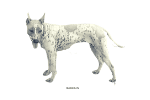 Abyssinian Sand Terrier |  African Village Dog |
 Africanis | Landrace, natural selection |
 Aidi Dog |  Pariah Dog |
 Armant | 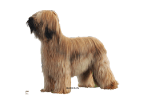 Briard Dog |
 Beauceron | |
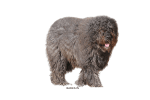 Barbet dog | |
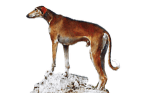 Azawakh | Unknown |
 Pariah Dog | |
 African Village Dog | Landrace, natural selection |
 Eurasian Wolf | |
 Basenji | 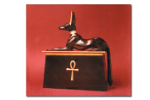 Ancient Egyptian Tesem |
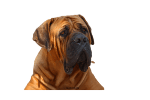 Modern Boerboel |  Bloodhound |
 English Bulldog | |
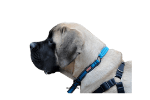 English Mastiff | |
 Pitbull Terrier | |
| Ancient Boerboel | Greek Molossus |
| Bullenbeisser (German Bulldog) | |
 Chinese Crested Dog | Unknown |
 Abyssinian Sand Terrier | |
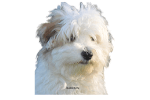 Coton de Tulear | Tenerife dog |
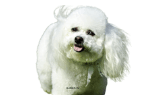 Bichon Frise | |
 Rhodesian Ridgeback | 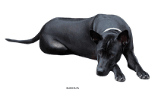 Ridged dogs of the Khoikhoi |
| Hottentot Hunting Dog | |
| Sitka dog | |
 Africanis | |
| Hottentot Hunting Dog | Landrace, natural selection |
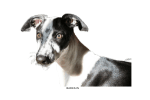 Sloughi | Unknown |
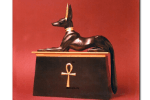 Tesem | Unknown |
Abyssinian Sand Terrier

Abyssinian Sand Terrier is an extinct ancient dog from the African continent. This dog originates from Abyssinian, the ancient Ethiopian empire. The Abyssinian Sand Terrier is a slender, fine-boned, hairless dog. Abyssinian Cat is a short-haired cat to originate from the same region.
This dog is a Terrier, developed initially for hunting vermin in the fertile Ethiopian fields. This dog, unlike the popular belief, is not completely hairless. They have sparse hair all-over their body. You will notice hair on their tails and ears as well. Jonangi, a native Indian dog, is closely related to this dog.
Etymology
This dog is from the ancient Ethiopian empire hence the name Abyssinian. To understand their name, Sand Terrier, one must look at their Asiatic cousins, the Jonangi dog.
The Jonangi dog is a hairless dog from India. These dogs make sand dens, dig burrows on river banks to escape the hot sun. We speculate that this dog’s name Abyssinian Sand Terrier is because of this trait that this dog shares with Jonangi.
History and Origin
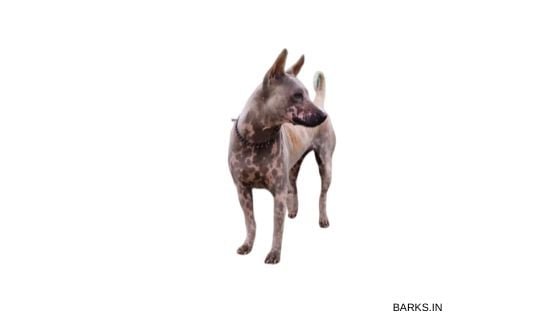
The precise origin of this dog is unknown. There are several popular theories about their ancestry. Most African experts believe this dog to be a descendant of the African Village dog, an ancient landrace from Africa. Few experts believe, people brought this dog into Ethiopia from Asia.
Purpose

In ancient times the Ethiopian empire was one of the most powerful states in the African continent. It was an epicenter of trade and culture in the Horn of Africa. We speculate that the Abyssinian Sand Terrier was most likely a dog used for keeping the vermin population in check.
Small, fine-boned, agile, and with highly tuned-senses made these dogs efficient vermin hunters. These dogs had an uncanny ability to sniff, track, and pounce on rats.
Traits
- Classification: unrecognized
- Status: Extinct
- Height: 42 – 50 cm
- Weight: 10 – 16 kg
This dog is a small-sized dog with a slender build. They are a typical Terrier-type dog, with fine-tuned senses, bat-like ears, sharp eyesight, and are extremely agile.
Health
There are no documents or historical records that point to the ailments of this dog. However, we speculate that this dog was prone to issues that are common to hairless dog breeds, such as.
- Entropion is a condition that causes the eyelids to fold inward, causing discomfort to the dog.
- They suffer from eye-related issues such as cataracts, red-eye, etc.
- Being a small breed, they are prone to patellar luxation or kneecap dislocation.
Interesting facts
- The Abyssinian Sand Terrier is one of the few hairless breeds of dogs in the world.
- They are very similar to the Indian Jonangi dog.
- This dog is now extinct.
- The hairless mutation is caused by ectodermal dysplasia as a result of a mutation in the FOXI3 autosomal gene.
Africanis

Africanis dog is another relatively unknown dog from Africa. Africanis is from the Southern African region and is an ancient landrace. Regionally Africanis is a group of several dog breeds with different names in different countries.
The Africanis Society of South Africa is responsible for the preservation and conservation of this ancient landrace. Their name Africanis is a combination of Africa + Canis (dog) representing their roots.
The Africanis dog is strikingly similar to the Indian Pariah dog, another landrace from the Indian subcontinent.
History and Origin
Experts believe the Africanis dog originates from the Pariah hound dogs in the Nile valley from the Levant in Asia. Ever since their arrival in the early 6th century, the Africanis has colonized the Southern African continent.
This dog is a landrace, a dog that naturally adapted to life alongside humans with little to no selective breeding. Hence, there are no breed standards for this dog. They vary from one region to another, and people use different names for the same type of dog.
Purpose

Like all landraces, the Africanis has lived alongside human settlements for thousands of years. This natural selection process resulted in one of the most critical interspecies relationships between man and dog.
Africanis is a hunting dog. Tribes all across Africa use this dog for hunting bush meat.
Africanis is a protector. People use this dog for guarding home, property, and livestock.
This dog also is a companion. All landrace dogs throughout the world have an innate ability to understand their human partners. This ability makes them an excellent companion for people.
Traits
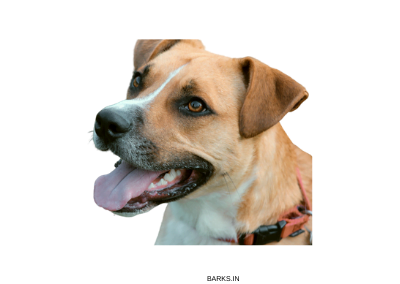
- Classification: Unrecognized
- Status: Vulnerable
- Height: 52 – 55 cm
- Weight: 18 – 25 kg
- Coat: Short and dense
According to the Africanis Society of South Africa, this dog should is slender, swift, well-muscled, and agile. The most crucial feature of this dog is not physical but its mental traits. This dog lives around people but seldom in close contact. It is a perfect blend of human attachment and freedom.
Health

The Africanis is a tough, sturdy dog. Natural selection gave this dog excellent disease resistance. In the African wilderness, people don’t have access to vaccines and medicines. Weaker pups cannot survive in such circumstances. This natural selection process has made these dogs robust.
- Rabies: Dogs that come in contact with wildlife, rodents, etc. are prone to rabies. If you have this dog as a pet, get it vaccinated.
- Parvo: Parvovirus is a deadly canine virus that affects pups that are less than six months old. Without immediate medical attention, dogs that suffer from Parvo don’t survive.
Interesting Facts
- Africanis is an ancient breed of dogs. Experts estimate that these dogs are about 7000 years old.
- The name Africanis is a combination of the words Africa and Canis, meaning African dog.
- The Africanis Society of South Africa is responsible for the preservation and conservation of this ancient landrace.
Aidi

Aidi is a North African cattle and sheep guard dog. They originate from the Atlas Mountains of Tunisia, Morocco, and Algeria. Aidi also goes by the name Atlas mountain dog.
The Aidi is the dog of the Berber tribes. This dog, for several generations, served and protected the livestock of these people. Alert, courageous, strong, the Aidi defends its flock from wild predators.
This dog is also renowned for its scenting ability. Hunters use this dog along with Sloughi, an African sighthound, to track down the game.
History and Origin

The Aidi is another ancient African dog. The ancestors of the Aidi were Pariah dogs from Asia. Pastoral North African tribes over several generations used the Aidi to protect their livestock.
Experts believe the Pariah dogs came along with travelers from Asia during the iron age. These Pariah dogs were the ancestors of the present-day Aidi dog.
We want our readers to note that no scientific studies exist to determine the conclusively the origin of this dog.
Purpose

The Aidi is a livestock guardian. They are a muscular, agile, and sturdy dog. Berber tribes use this dog to guard their sheep against wild predators such as the Barbary Leopard. Tales of Aidi protecting their flock against the now extinct Barbary Lion are legendary.
People also use this dog for tracking game. Aidi has an excellent sense of smell. These dogs can follow scent trails and take the hunter close to their prey.
Traits

- Classification: Unrecognized
- Status: Least concern
- Height: 52 – 55 cm
- Weight: 22 – 28 kg
- Coat: Double coat
The Aidi is a medium-sized dog. They are sturdy, muscular, and agile dogs. Generations of selective breeding in the rugged Atlas Mountains have made these dogs strong and capable of working long hours. The Berber tribes use strong and healthy dogs as their breeding stock.
The most notable physical trait is the Aidi’s head. It is large and bear-like. These dogs have a fluffy tail that is straight. The Aidi’s coat is water-resistant and dense.
Temperament
The Aidi is a courageous guard dog. They are renowned for their protective and territorial instincts. Hence, pups need training and socialization to differentiate friend from foe.
They are an intelligent breed, eager to work but easily distracted. Aidi’s fine-tuned senses often distract them, so keep your training sessions short.
Health
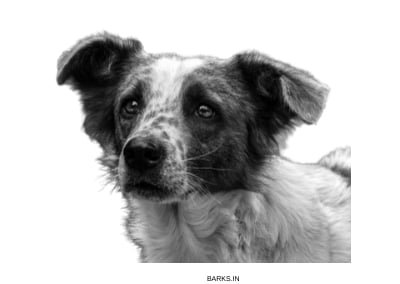
Aidi is a healthy breed of dog. The Berber people choose dogs that are healthy and strong as their breeding stock. This selective breeding process has made these dogs immune to most ailments.
- Progressive Retinal Atrophy (PRA) is an eye ailment when untreated can cause night blindness.
- Muscle and skeletal issues such as torn ACLs, elbow issues, etc. occur.
- This dog sometimes suffers from Hypothyroidism is a condition where the thyroid gland malfunctions.
Interesting facts
- Aidi is renowned for its courage. Legend says that this dog is not afraid to defend its flock against African Lion and Leopards.
- Aidi has an excellent sense of smell. Hunters pair Aidi with Sloughi’s during hunts to track game.
- They are an excellent watchdog.
Armant
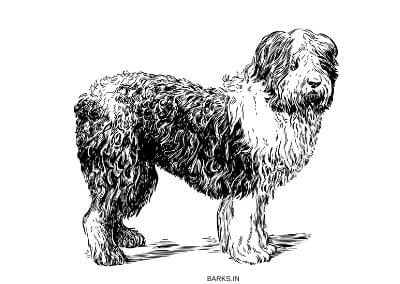
Armant is a small-sized dog. This dog is also called Egyptian Sheepdog or Ermenti. They are from the Armant region of Egypt. Compared to most other African dogs on our list, this is a modern dog.
Armant is known for its courage, companionship, and loyalty. People use this dog as a livestock and property guardian.
History and Origin
The Egyptian Sheepdog is a direct descendant of the French Briard dog, interbred with few other European breeds such as the Beauceron and the Barbet dog.
The French campaign in Egypt was between 1798 to 1801. Experts believe that the French troops brought the ancestors of the Armant into Egypt.
Egyptian dog fanciers claim that this dog has remained the same for the last 200 years.
Purpose

The Armant is a livestock guardian. These dogs are alert, territorial, and loyal. These traits make this dog an outstanding watchdog. Their name, the Egyptian Sheepdog, is not attributed to their herding ability instead, to their guarding ability.
This dog, with its balanced temperament, also makes an excellent family pet. They are loyal, loving, affectionate, and form long-lasting bonds with the members of their families.
Traits
- Classification: Unrecognized
- Status: Vulnerable
- Height: 52 – 55 cm
- Weight: 22 – 28 kg
- Coat: Single coat
The Armant is a small to medium-sized dog. They have a large bear-like head, small almond-shaped eyes, and a deep chest. The general appearance of the dog depicts its agile and alert disposition.
Temperament
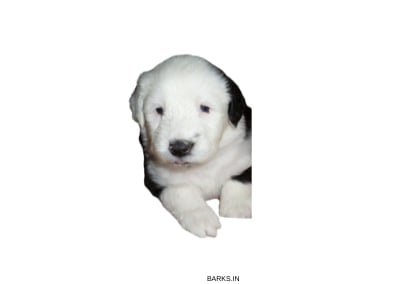
The Armant dog has a balanced character. They are intelligent dogs, hence easy to train. Being a sheepdog, they are protective and will defend their families until the end.
This dog is compatible with other pets. They love to play and are generally patient with kids. Our readers should note that kids need supervision and oversight when they are with dogs. Even if the dog is friendly, it is crucial to teach kids good mannerisms around animals.
Health
The Armant is a healthy breed of dog. The following are some ailments that afflict this breed.
- Lens Luxation is when the lens in the dog’s eyes get detached from its normal position. The color of the eye changes to grey.
- Dermatitis causes itchiness and hair loss in dogs. Learn how to treat Dermatitis using simple home remedies for dogs.
- Skin allergies are also common in this breed.
Interesting facts
- The Armant dog has French origins. The closest ancestor of this dog is the Briard dog.
- Armant is an excellent watchdog with unwavering loyalty towards its family.
Azawakh

The Azawakh is a sighthound from West Africa. This dog is another African dog that closely resembles Indian sighthounds. The Kanni dog, the Chippiparai dog, and the Mudhol hound are Indian sighthounds, which are phenotypically similar to this dog.
The most distinguishing feature of this dog is its gait. The gait is feline-like because of this dog’s peculiar shape. Azawakh’s short and flat back, combined with long legs, makes their hips taller than the withers.
The Azawakh is from the Azawagh Valley in West Africa. The nomadic Tuareg people, breed and use this dog for coursing game. Rapid urbanization has wiped out most of the game in this region. Hence, today the Azawakh serves as a guard dog.
History and Origin

The Azawakh is an ancient breed of dogs. The precise origins of this dog are still unknown. This dog, like most other Asian sighthounds, is a product of its harsh environment. While selective breeding by humans played its part, this dog is sculpted by the harsh environment in which it lives.
The Tuareg people who are the custodians or the keepers of this dog employ breeding practices that are uncommon in the West. These breeders choose their breeding stock based knowledge acquired over several generations. Typically only one dog from a community is allowed to sire pups.
The community also culls all female pups, retaining them only when they need additional dogs. This process has ensured greater genetic diversity in the Azawakh’s.
Purpose

The Azawakh lives in some of the harshest and remote places in Africa. Unlike the West, where there is a dog for every conceivable task. In this remote area, the Azawakh is the only breed of dog. Hence, these dogs fulfill multiple roles.
The Tuareg people use this dog for coursing game. As a sighthound, this dog thrives in the open plains. They use their excellent vision to spot game and use speed to chase.
The Azawakh is also an excellent guard dog. They are active and alert, capable of protecting livestock and property.
Traits
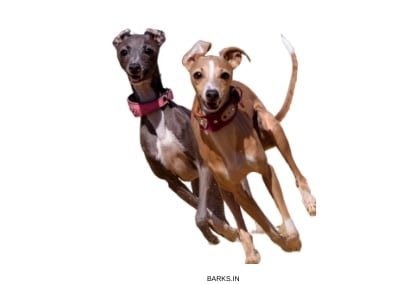
- Classification: Hound
- Status: Least Concern
- Height: 64 – 74 cm
- Weight: 20 – 25 kg
- Coat: Single smooth-coat
The Azawakh is a beautiful looking dog with unique features. They are a sculpture of their environment. Tall, lean, agile, and an aerodynamic body makes this dog fast. The Azawakh can hit speeds up to 64 kph or 40 mph.
They are medium-sized, lean, and with a deep chest. With visible ribs, pointed head, and a long whip-like tail gives them the distinct sighthound look. This dog has a smooth-single-coat.
Temperament

The Azawakh is independent, loyal to its family, and incredibly courageous on hunts. Don’t let their slender frame fool you; these dogs will defend their family and livestock boldly.
These dogs are intelligent and can make independent decisions on their own. In the remote regions where they live, the Azawakh cannot always look at its master of instructions. This dog can make decisions based on circumstances.
Azawakhs are loyal, affectionate, and loving. They are lovely with kids, other pets and are loyal to their family.
Health
The Azawakh is a product of natural selection, and a robust selective breeding process made this dog immune to most canine diseases.
- Bloat is a condition where the intestine of the dog twists internally.
- This dog is susceptible to food allergies.
- Joint and muscle issues are common in all sighthounds.
Interesting facts
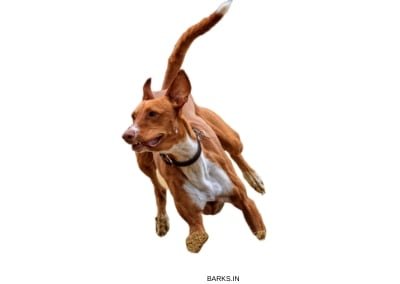
- The Azawakh is an ancient and primitive breed of dog from West Africa.
- They are a sighthound and resembles the South Indian sighthounds.
- The top speed of the Azawakh is 64 kph.
African Village Dog
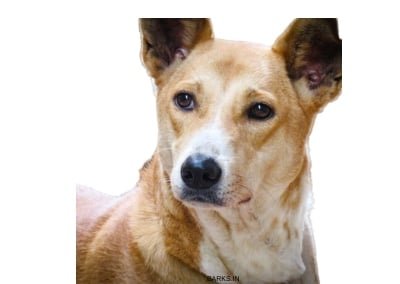
The African Village Dog is another ancient and indigenous breed of dog from Africa. These dogs reached the African continent several thousand years ago. Today, the African Village Dog occurs throughout the African continent.
Recent DNA studies indicate that this dog is a distinct breed without any traces of European dogs.
History and Origin

The African Village Dog is an ancient landrace that arrived in Africa between 15,000 to 40,000 years ago. Studies show the Eurasian wolves to be the ancestors of this dog.
Some experts claim that this dog came to Africa a long time ago from Asia. They believe that the ancestors of this dog were the Pharaoh Hounds (not the modern dog from Malta) that lived in Egypt.
Today the African Village Dog occurs all across the African continent. They are now a product of the regions in which they live. Each African country and each language uses different names for the same dog. This breed of dog exhibits regional variances in size, color, and character.
Purpose
The African Village Dog is a multi-purpose dog. People use these dogs to guard their homes and property. This dog is alert and agile. These traits make them excellent guard dogs. Unlike modern breeds, this dog is well suited to its environment. They are low cost and low maintenance dogs.
Villagers sometimes use this dog for hunting small game. This dog is agile and is capable of running down small animals such as hare.
Traits

- Classification: Unrecognized
- Status: Vulnerable
- Height: 48 – 55 cm
- Weight: 20 – 25 kg
- Coat: Single coat
The African Village dog greatly varies from one region to another. These are landraces that adapted to life without any selective breeding. Hence, these dogs don’t conform to a set standard. They are a product of the environment in which they live.
Notable local variants in the African Village Dog
The table below lists some of the local variants of the African Village Dog in the African continent.
| # | Regional Variant | Country/Region | Purpose |
|---|---|---|---|
| 1 | Cameroon Dog | Cameroon | Hunting dog |
| 2 | Zande Dog | Congo | Hunting dog |
| 3 | Egyptian Hairless Dog | Egypt | Terrier type hunting dog |
| 4 | Tesem | Egypt | Hunting dog |
| 5 | Avuvi | Ghana | Watch dog |
| 6 | East African Dog | Kenya | Hunting dog |
| 7 | Bagirmi Dog | Kingdom of Bagirmi | Hunting dog |
| 8 | Liberian Dog | Liberia | Terrier type hunting dog |
| 9 | Madagascar Hunting Dog | Madagascar | Hunting dog |
| 10 | Simaku | South Africa | Terrier type hunting dog |
| 11 | Zulu Dog | South Africa | Hunting dog |
| 12 | Sudan Greyhound | Sudan | Sighthound |
| 13 | Bisharin Greyhound | Sudan | Sighthound |
| 14 | Hahoawu | Togo | Watch dog |
| 15 | Baganda Dog | Uganda | Hunting dog |
| 16 | West African Mouse Dog | West Africa | Terrier type hunting dog |
| 17 | Zanzibar Dog | Zanzibar | Sighthound |
Interesting Facts
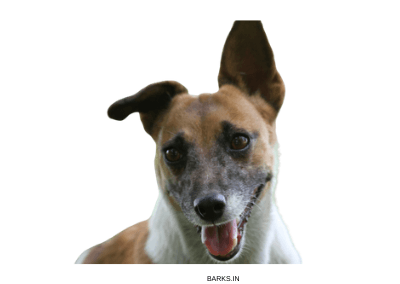
- African Village Dog is an ancient dog. Experts estimate that this dog reached Africa 15,000 to 40,000 years ago.
- This dog is one of the oldest breeds of dog in the world.
- Over several thousand years, the African Village Dog has naturally adapted to its environment.
- There are 15+ regional variants of this dog alive today.
Basenji

The next dog in our list of African dog breeds is the famous Basenji dog. This dog is another ancient small-sized hunting dog. When the Europeans arrived in Africa, they took several Basenji’s. Soon the Basenji became famous across Europe. The Basenji is a barkless dog. These dogs don’t bark; rather, they yodle.
All major Kennel clubs recognize this dog. United Kennel Club (UKC) classifies this dog as a sighthound, and the American Kennel Club groups them as Hound.
In Africa, people use this dog for hunting and tracking animals through dense forests in the Congo region. They use the Basenji for coursing the prey towards nets.
History and Origin
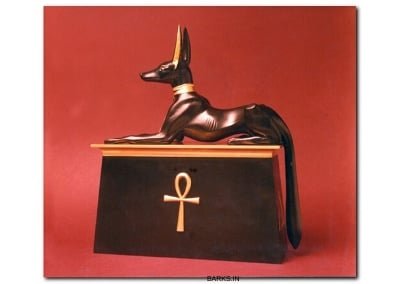
The Basenji is an ancient dog. Experts believe that this dog’s ancestors were Egyptian Tesem dogs. Ancient portraits for dogs that look like the Basenji occur all through Egypt. Some of these drawings date back to 3200 BC to 3000 BC.
Basenji’s, like the Australian Dingoes, vocalize using yodles. Only ancient and primitive dogs exhibit such traits. Some claim that selective breeding by hunters made this dog quiet. These dogs hunt in dense jungles, dogs that bark will not be useful as they can scare prey off.
Purpose
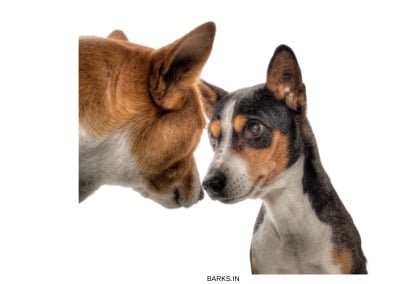
The Basenji is a small-to-medium-sized sighthound. People in the Congo region use this dog for driving small game into nets. The Zande people tie bells around the neck of their dogs to ensure that hunters differentiate dogs from their prey.
The Basenji is also an excellent watchdog. What they lack in size, they make up in character. These dogs are fearless and will take on larger opponents boldly.
Traits

- Classification: Sighthound
- Status: Least concern
- Height: 40 – 45 cm
- Weight: 9 – 12 kg
- Coat: Single coat
The Basenji is a small-sized sighthound. The notable features of this dog are their short curly tails and erect bat-like ears. Egyptian pyramids depict dogs with similar features. Their curled tail closely resembles the Japanese Akita’s tail and the Korean Jindo’s tail. However, both dogs are unrelated.
Basenji’s coat is smooth, and they have single-even-coat with dark skin. These dogs are piebald, a mix of black with white or brown with white.
Temperament
These dogs are sighthounds, energetic, alert, and independent. They are wary of strangers and need early socialization. These dogs are not compatible with pets other than dogs.
Basenji’s are agile and can climb fences with ease. These dogs also stand up on their hind legs to observe their surroundings. This trait is useful while hunting in dense jungle.
These are dogs with high prey drive. They need frequent exercise to fulfill their prey drive.
Health

The Basenji is a primitive breed of dog. These dogs thrive in Africa. Dogs that leave Africa are susceptible to canine diseases that are unknown in Africa.
- Canine distemper is a deadly disease that affects this breed. When the British exported these dogs, several died due to distemper.
- Hypothyroidism affects the dog’s thyroid gland, and the Basenji is susceptible to it.
- This dog also suffers from Mange.
Interesting Facts
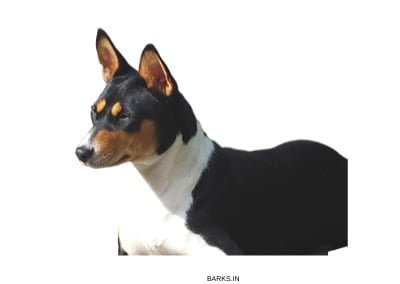
- The ancestors of the Basenji are the ancient Egyptian Temes dogs.
- Hunters use this dog to chase animals into nets. Hunters also tie a bell around the dog’s neck during these hunts.
- The Basenji is a barkless dog that yodles and howls.
Boerboel

The Boerboel is a mastiff-type dog from South Africa. They are a large guard dog. Farmers in Southern Africa rely on this dog to protect their homestead from Lions and Leopards.
Enormous, muscular, and intimidating, the South African Boerboel never backs down from a fight.
History and Origin

The story of Boerboel is an interesting one. The ancient Boerboel was a dog brought to Cape Town by the Dutch East India company. The trade posts needed protection, and the Boerboel was the perfect dog for the job. The ancient Boerboel’s ancestors were the extinct Greek Molossus and the Bullenbeisser (German Bulldog).
The ancient Boerboel has lost its genetic purity with the introduction of modern dog breeds in South Africa. Farmers wanted intimidating and robust dogs for protection. This need resulted in the introduction of European dogs such as the Bloodhound, English Mastiffs, Great Danes, Irish Wolfhounds and other large breeds of dogs into the Boerboel’s bloodlines.
Purpose
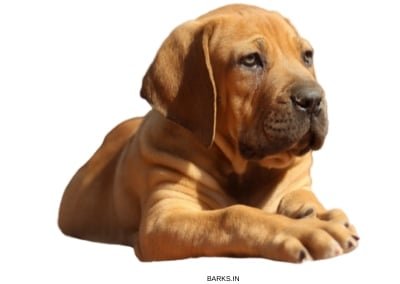
Boerboel in Afrikaans means farmer’s dog. This dog is a protection dog for farms and other large estates. Weighing close to 100 kg, this dog can take on Leopards and African Lion.
This South African dog has a deep and loud bark using which this dog alerts its master. Despite their large size, they are agile and thrive in harsh conditions.
Traits
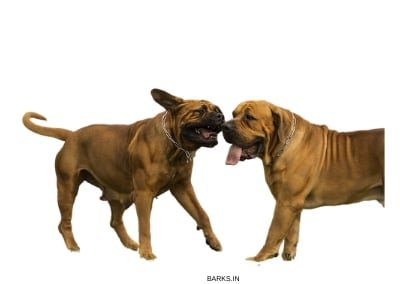
- Classification: Working dog
- Status: Least concern
- Height: 68 – 75 cm
- Weight: 70 – 95 kg
- Coat: Single coat
The Boerboel is a large breed of dog. They are a mastiff-type dog with a large head, loose skin, and deep bark. With a square-shaped body and an enormous frame, they are capable of taking on large predators.
Temperament

Boerboels combine several large and aggressive breeds in their bloodline. They are not a dog for a novice or first-time dog owner. Boerboels ranks 7th in our list of world’s most dangerous dogs.
Despite their large size, they are gentle and are protective of their family. These dogs can become aggressive if they are not socialized. These dogs possess a stubborn character, and without consistent and robust leadership, it is difficult to manage this large dog.
Health

Boerboels, in general, are a healthy breed of dog.
- Hip dysplasia is a painful condition that affects the dog’s backbone.
- Older dogs suffer from Cataracts, which cause eye lenses to become cloudy and decrease the dog’s vision.
- This dog is prone to bloat. It is important not to exercise this dog right after its meal.
Interesting Facts
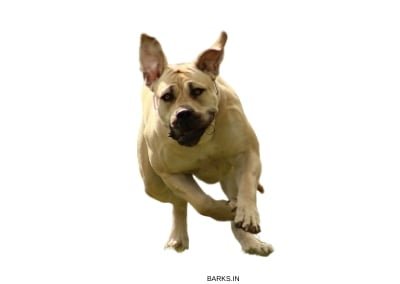
- Boerboel is a large breed of dog that weighs over 90 kg.
- Boerboels are protection dogs that guard farms against African Lion and Leopards.
- They are the 7th most dangerous dog in the world.
Chinese Crested Dog

Despite their name, the consensus among dog experts is that this dog is from Africa. The Chinese Crested Dog is a small breed of hairless dogs. Like most other African dogs, the Chinese Crested Dog is an ancient breed.
This dog appears in the 15th-century painting by Gerrard David – “CHRIST NAILED TO THE CROSS.” Several ancient texts also point to a hairless dog with crests living in Africa.
History and Origin

The Chinese Crested Dog’s ancestor was the African Hairless dog. In ancient times Chinese ships sailed to Africa for trade. Rats were a significant problem in these ships. Sailors needed a small dog that can keep the vermin population in check.
Chinese Crested Dog was the solution. They were little, hairless, and free from fleas. These dogs reached China in these trading vessels and became popular ratters in China.
Purpose

The Chinese Crested Dog is an excellent ratter. Their small size, alert nature, and agility made them excel as vermin hunters in Chinese ships. The Chinese sailors also believe that this dog brings good luck during their long voyages.
This dog is gentle, loving, affectionate, and small. These traits make them excel as companion dogs.
Traits

- Classification: Companion Dog
- Status: Least concern
- Height: 30 – 33 cm
- Weight: 4 – 6 kg
- Coat: Hairless and powderpuff
This dog is a small breed of dog. This dog occurs in two variants.
- Hairless: The hairless variety has hair on their head, tails, and foot. All other parts of their body are hairless.
- Powderpuff: The powderpuff dogs have long hair over their small body. The texture of their hair is similar to human hair.
Pups from the same litter are both hairless and powderpuff.
Temperament

The Chinese Crested Dog has a gentle and balanced character. They are excellent companion dogs that are gentle and patient with kids. These dogs are an excellent choice for first-time and novice dog owners.
Health
These dogs are prone to health issues listed below.
- This dog suffers from several eye-related issues, such as Cataracts, Entropion.
- This dog is prone to heart diseases.
- Epilepsy is a life-threatening condition in which the dog suffers from seizures.
Interesting Facts

- Despite their name, these dogs are not from China. They are an African breed of dog.
- This dog is both a companion and a hunter.
- There are two hair variants in this dog. Hairless dogs lack hair on their body, and powderpuff has fluffy hair all over its body.
Coton de Tulear

The Coton de Tulear is a small breed of dog from Madagascar. It is the national dog of Madagascar. Local people say these dogs swam to shore following a shipwreck off the coast of Madagascar. These dogs were most likely the French Bichon Tenerife dog.
They get their name from their cotton-like fluffy hair. The Coton de Tulear is mostly white, sometimes with dark markings or even tricolor.
History and Origin

The ancestors of this dog were the French Bichon Tenerife dog. Experts believe that native Madagascar dog was interbred with the Tenerife dog to produce the Coton de Tulear.
The old historical records describe a dog that looks like a cotton ball arriving in Madagascar abroad pirate ships. The Coton de Tulear’s ancestors were ratters on the pirate ship.
In the late 16th century, pirates established a naval base in Madagascar. Some of their dogs were left behind on the island. These dogs soon became popular among the Merina tribe of Madagascar.
Purpose

The Coton de Tulear is a small breed of dog. This dog combines cute and cuddly looks with excellent temperament. They are a low-shedding. All of these traits make this dog an excellent companion.
Until the late 19th century, people use this dog to keep vermins at bay. Their small size and an alert disposition, made them excel as ratters in ships.
Like the Lhasa Apso and the Indian Spitz, the Coton de Tulear is a champion companion dog.
Traits

- Classification: Companion Dog
- Status: Least concern
- Height: 25 – 30 cm
- Weight: 4 – 6 kg
- Coat: Cotton-like fluffy double coat
The Coton de Tulear is a small breed of a companion dog. With cute looks, fluffy cotton-like hair, and a gentle character this dog, this dog is capable of spell-binding people.
The Coton de Tulear has a fluffy white coat. Other colors such as black with white markings and tricolor dogs are rare. Their black nose and dark round eyes contrast with their white hair, giving them their adorable looks.
Their fluffy hair requires grooming and daily care. This dog is a low shedding breed and is hypoallergenic.
Temperament
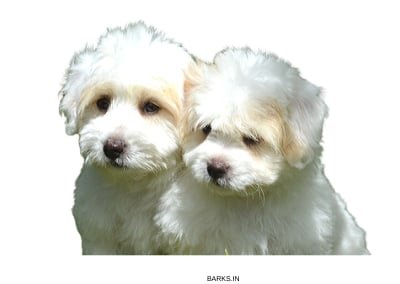
The Coton de Tulear is an alert, intelligent, and loyal dog. They form inseparable bonds with their families and feel miserable when away from their families.
These dogs enjoy playing and can be quite vocal while playing. Their small size and proportional body give them excellent balance. Cotons are capable of performing several tricks. They can walk upright on their hind legs.
Health
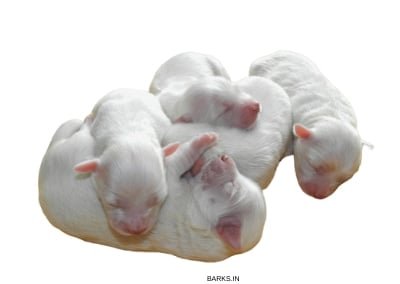
The Coton de Tulear is a healthy dog. They are prone to issues that affect small dog breeds.
- The Coton de Tulear suffers from bone-related issues. Hip dysplasia and elbow dysplasia are painful conditions that require veterinary care.
- Epilepsy is a life-threatening condition in which the dog suffers from seizures.
- They are prone to environmental allergies, such as dust and pollen.
Interesting facts
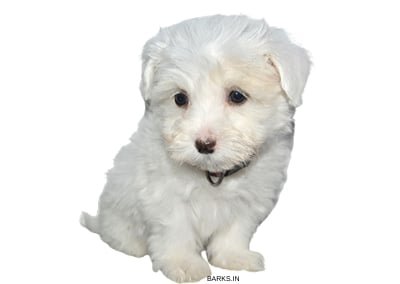
- The Coton de Tulear is the national dog of Madagascar.
- These dogs reached Madagascar onboard pirate ships.
- The Coton de Tulear is an expensive breed of dog. The average puppy cost ranges between $2000 to $3500.
Rhodesian Ridgeback

Rhodesian Ridgeback is a large breed of dog from Zimbabwe, Southern Africa. They are the national dog of South Africa. The most distinguishing feature of this dog is the ridge of hair that grows over its back. The ridge of fur grows in the opposite direction.
Dog’s with ridges on their back are extremely rare. The Indian Kombai dog, Phu Quoc ridgeback dog, and Thai ridgeback are the only other breed of dogs that have a ridge on their back.
History and Origin
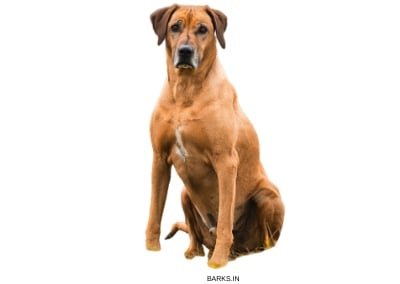
The ancestors of the Rhodesian Ridgeback dogs are ancient South African dogs. The Ridged dogs of the Khoikhoi, Hottentot Hunting Dog, Sitka dog, and the Africanis are the possible ancestors of this dog.
Dogs from Europe came along with Europeans. Interbreeding with native dogs was the only way for these exotic dogs to survive the harsh African environment.
The precise history is unclear. Experts believe Reverend Charles Daniel Helm brought two dogs to his mission at Zimbabwe. Interbreeding between these two dogs with African-European crosses resulted in the Rhodesian Ridgeback.
Purpose
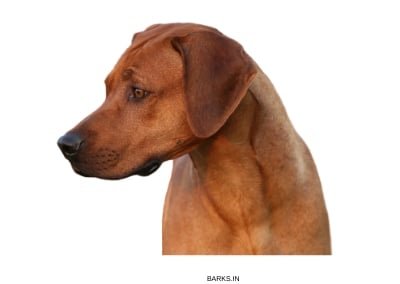
The Rhodesian Ridgeback is a large breed of dog. They are alert, robust, and courageous. People use this dog as protection and watchdog. Their large size, muscular frame gives them an intimidating appearance.
People also use these dogs for hunting. They are an athletic dog capable of hitting speeds up to 40 kph. In the US, fanciers enroll their dogs in lure coursing competitions due to their ability to run fast.
Traits
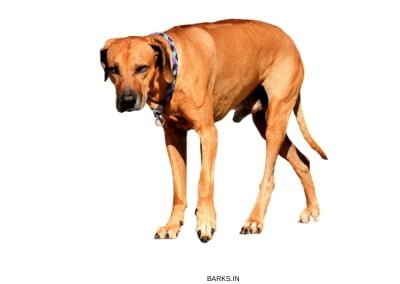
- Classification: Sighthound
- Status: Least concern
- Height: 65 – 79 cm
- Weight: 55 – 65 kg
- Coat: Smooth, single coat
The Rhodesian Ridgeback is a large breed of dog. They occur in wheat color, sometimes with white markings on their chest. These dogs are built powerfully with prominent and well-developed muscles.
The head is wedge-shaped, with floppy ears, and a long straight tail. They have prominent hair growth along their spine, giving an appearance of a ridge. Some Rhodesian Ridgebacks have black masks.
Temperament

The Rhodesian Ridgeback has a strong personality. They are not your average companion dogs. A properly trained dog is loyal, protective, and an excellent family dog.
They are an intelligent breed of dog, wary of strangers, and make excellent guard dogs. Rhodesian Ridgebacks are not dogs for novice or first-time dog owners.
These dogs need consistent leadership and experienced handling. A first-time dog owner will not be able to manage this large dog.
Health
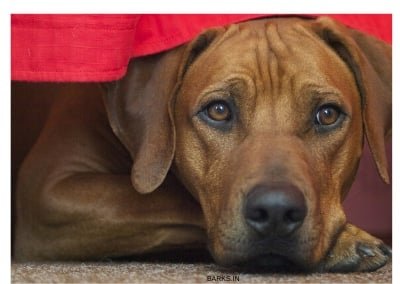
The Rhodesian Ridgeback suffers from the following health issues.
- Dermoid sinus is a congenital neural-tube defect that affects this dog.
- Hypothyroidism is a condition where the thyroid gland malfunctions causing metabolic disorders in this breed.
- Bloat is a condition where the intestine of the dog twists internally. Dogs should never be allowed to exert themselves right after meals.
Hottentot Hunting Dog
The Hottentot Hunting Dog is an extinct dog breed from Africa. Experts believe that this dog was one of the ancestor breeds of the Rhodesian Ridgeback.
This dog belonged to the Khoikhoi people of South Africa. Information about this dog is hard to come by. All that we know is that these dogs were hunting hounds with pointed muzzle, floppy ears, and a ridge on their backs.
Sloughi

The next dog in our list of African dog breeds is the famous Sloughi. The Sloughi is one of the most critical sighthound breeds in the world. Several sighthounds originate from the ancient and magnificent African dog.
Sloughi, like dogs, are portrayed in Egyptian pyramids dating back several thousands of years ago. This dog is a renowned hunter in its native land of Morocco. Fast, agile, and can maintain its speed over vast distances, the Sloughi truly is a fantastic dog.
History and Origin

The Sloughi is several centuries old, the precise origin of this dog is unknown. Egyptian pyramids and tombs contain ancient drawings of dogs like Sloughi and Azawakh. However, without DNA studies, it is impossible to ascertain if the drawings depict these dogs.
In the early 19th century, these dogs were almost extinct. During the French occupation, French law prohibited hunting with sighthounds. Bounties were paid for killing the Sloughi, which decimated their population.
It was in the 1960s, a mission to restore the Sloughi was started in Europe. Careful breeding enabled the preservation of the remaining Sloughis. To this day, the Sloughi remains vulnerable and rare.
Purpose

The Sloughi is a sighthound with exceptional speed and endurance. They are accustomed to the harsh and rugged environment. Hunters use the Sloughi and the Aidi together during hunts. Aidi is a scenthound that tracks down the prey, once spotted, Sloughis are let loose for coursing game towards hunters.
The Sloughi is also an excellent guard dog, alert and wary of strangers. They are capable of protecting home and property.
Traits

- Classification: Hound
- Status: Least Concern
- Height: 64 – 74 cm
- Weight: 20 – 25 kg
- Coat: Single smooth-coat
The Sloughi is a sighthound. They are medium-sized, slender, and well-muscled dogs. Built for speed and endurance, the Sloughi excels in lure coursing.
This dog has a single smooth-coat. Being a sighthound, these dogs require regular exercise and cannot live in apartments.
Temperament

The Sloughis have a sensitive nature. They don’t respond well to forceful training. To earn their respect, one must be respectful. Sloughi’s are aloof and independent.
The Sloughi is a one-person dog. They remain loyal to one master. However, they accept all the members of the family and are protective of their pack. Sloughi’s need experienced handlers, who understand their body language.
Health
The Sloughi is a healthy breed of dog that is well-adapted to harsh African life. They are not accustomed to cold Western weather. The following are some health issues to afflict this breed.
- Sloughis are active and are prone to patellar luxation or kneecap dislocation.
- Sloughi’s also suffer from Hip dysplasia.
- This dog is prone to bloat. It is important not to exercise this dog right after its meal.
Interesting Facts

- Sloughi’s are an ancient sighthound. Egyptian pyramids have paintings of dogs that resemble the Sloughi.
- These dogs are fast sprinters as well as endurance runners. They are capable of sustaining high speed over long distances.
- The top speed of Sloughi is 60 kph or 37 mph.
Tesem dog
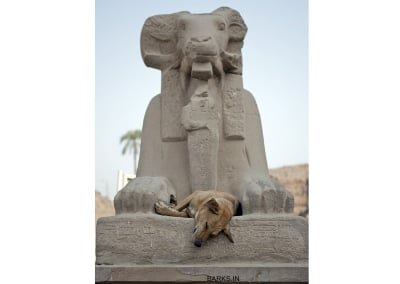
The Tesem dog is the ancient Egyptian dog that lived and served the Pharaohs. The modern-day Aidi is the closest relative of the Tesem dog. The Tesem dog has erect ears, a pointed muzzle, and a curved tail.
The paintings in pyramids depict three types of dogs.
- Basenji Type: These dogs have erect ears, sighthound like features, and a curved tail.
- Sloughi Type: These dogs are sighthound-like, lean, slender, with a broad chest, and long whip-like tail.
- Terrier Type: The third type of dog loosely resembles Terriers. Small, rectangular body, and with erect bat-like ears.
Tesem dogs played a crucial role in ancient society. These dogs lived a privileged life in palaces next to the Pharaohs. History does not record the origin or the extinction of the Tesem dog. All that remains today is the pyramid paintings.
African Wild Dog
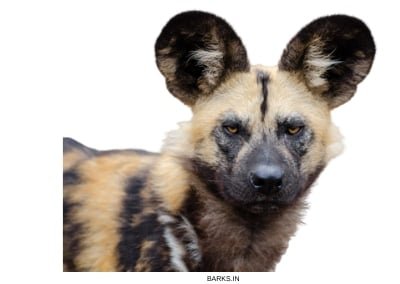
The African Wild Dog is not a domestic dog. Since this post is about African dogs, we cannot ignore this beautiful wild dog.
The African Wild Dog or the Painted Hunting Dog is an endangered wild dog that lives in sub-Saharan Africa. These dogs are highly social animals that live in complex social packs.
This dog is one of the most successful hunters in the African wilderness. They are pack hunter that hunts with extraordinary ability to coordinate hunts between the pack.
Despite popular belief, the African Wild Dog cannot be domesticated. These wild animals need our protection and care from a distance. Habitat destruction, the introduction of canine diseases, and inbreeding are some of the factors that are pushing these dogs towards extinction.
Conclusion: Dogs of Africa

The African continent is not only the cradle of mankind but also the birthplace of dogkind. These beautiful and ancient dogs need our care and our protection.
Dogs like Sloughi, Azawakh, Aidi, and Africanis need to be preserved and protected. Losing these dogs is equivalent to losing a part of mankind’s history.
DNA studies on these magnificent dogs might reveal the history of dogs in our planet. Hence we urge our readers, while we enjoy these dogs, we must also protect them.

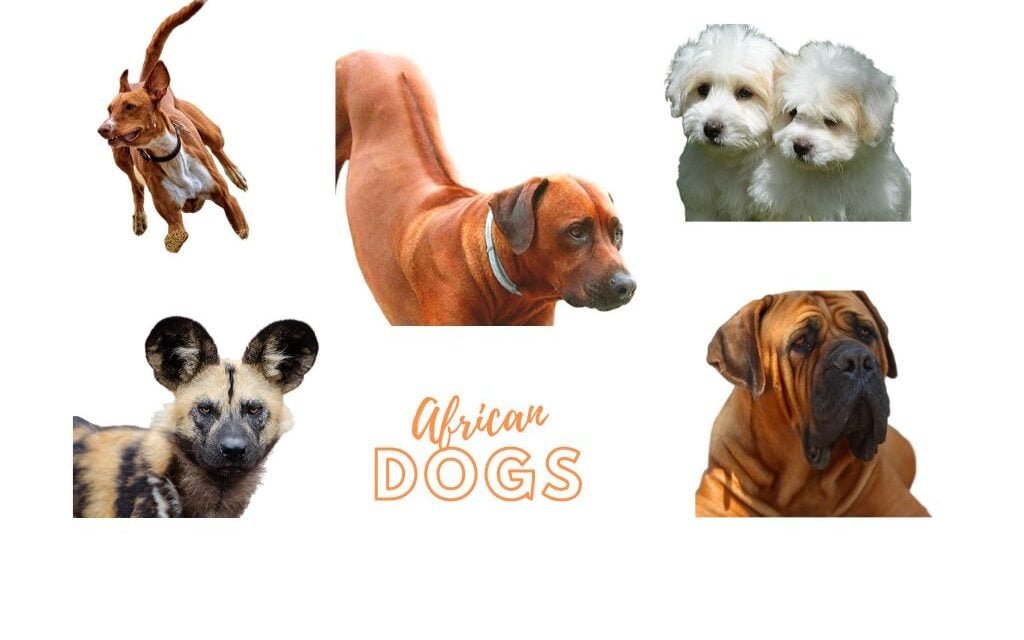
Wow!